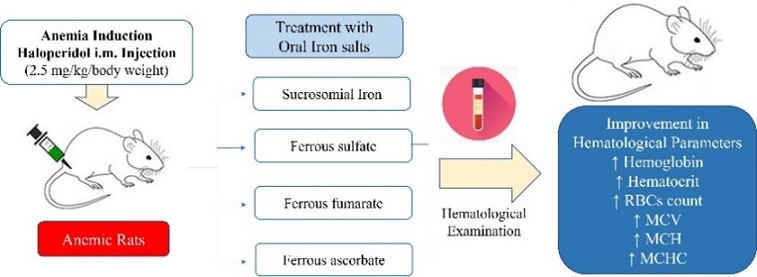
Comparative assessment of anti-anemic effect of Sucrosomial iron in haloperidol-induced iron deficiency anemia in Wistar rats
Abstract
Anemia affects almost one-third of the world's population. Conventional oral iron salts have limitations such as poor bioavailability and poor tolerability. Sucrosomial iron gets absorbed through the hepcidin independent pathway; hence overcoming all these limitations. The present study assessed the anti-anemic effect of various iron salts on hematological parameters in haloperidol-induced iron deficiency anemia in Wistar rats. Iron deficiency anemia was induced by haloperidol injection (2.5 mg/kg body weight/day i.m.) for initial 5 days along with an iron-deficient diet throughout the study. Disease control animals received ferrous sulfate, ferrous ascorbate, ferrous fumarate, and Sucrosomial iron at a dose of 30 mg/kg p.o for 15 days. On day 20, animals treated with all iron-supplemented groups showed significant improvement in hematological parameters. Interestingly, the Sucrosomial iron group showed significantly higher improvement in hemoglobin levels and hematocrit parameters than other oral iron salt groups (P<0.05). This effect may be due to the higher bioavailability of Sucrosomial iron. We concluded that Sucrosomial iron exhibited a potent anti-anemic effect against haloperidol-induced iron deficiency anemia in Wistar rats compared to other conventional oral iron salts.
Keywords
Iron deficiency anemia; Haloperidol; Conventional oral iron; Sucrosomial iron; Hemoglobin;
 ISSN 2321-4635
ISSN 2321-4635